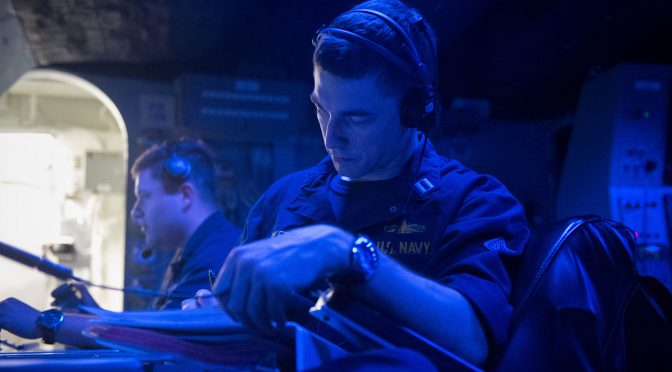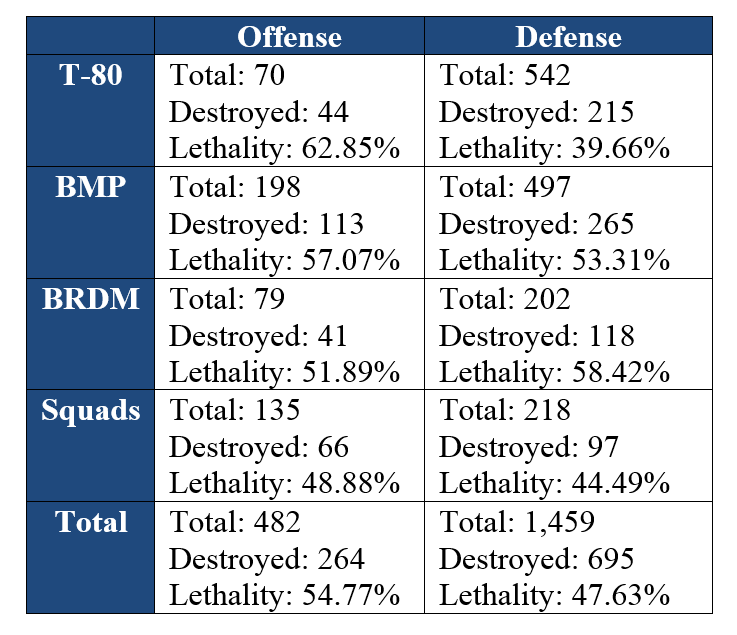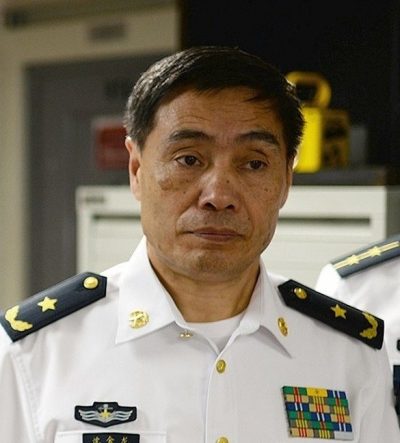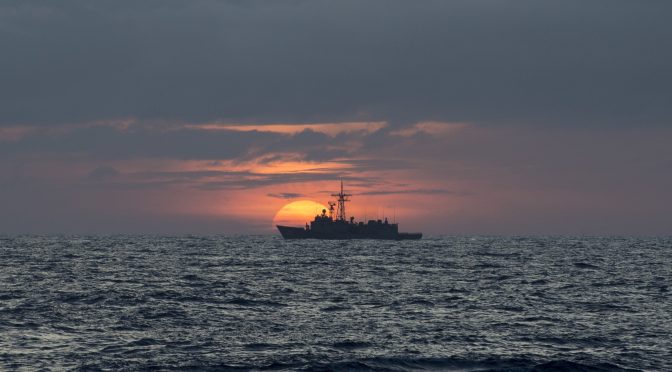Read Pt. 1 on Combat Training.
By Dmitry Filipoff
The Navy’s tactical ignorance is built into its arsenal. Currently some of the Navy’s most important weapons development programs are not just evolutionary, but revolutionary in the possibilities they open up. This is not due to innovation, but instead many of these noteworthy and foundational capabilities are finally arriving decades after the technologies were first proven, many close to half a century ago. Many of these most crucial weapons are already in the hands of great power competitors such as Russia and China who have had decades of opportunity to train and refine tactics with them.
Offensive Firepower
“…no captain can do very wrong if he places his ship alongside that of the enemy.” –Horatio Nelson
One of U.S. Navy’s gravest errors in handicapping its own development was neglecting the development of long-range offensive firepower in the age of missile warfare. What made the anti-ship missile a revolution in naval warfare was its ability to deliver a powerful pulse of firepower comparable to that of an attacking wave of carrier aircraft through a combination of high speed, large warhead size, and salvo fires.
In spite of this by 1971 the Soviet Union managed to field 11 different types of anti-ship missiles before the U.S. had yet to field one.1 Today numerous surface ships, submarines, and heavy bombers in the Russian and Chinese navies carry long-range anti-ship missiles, many with supersonic speed and ranges as great as over 200 miles. It was not until 1977 that the U.S. Navy would field its first anti-ship missile, the Harpoon, which remains its primary anti-surface weapon to this day. Weapons with triple the range and speed of the Harpoon missile already existed in numbers 50 years ago.2

The Harpoon is a slow, subsonic missile and extremely short-ranged at around 70 nautical miles.3 The Harpoon also isn’t equipped by most of the U.S. Navy’s destroyers. It is only found on less than half of the Navy’s destroyers despite there being little difference in the design of the ships that carry them and those that do not.4*
The submarine force took Harpoon out of its inventory entirely in 1997 which shaved tens of miles off its surface strike range and limited itself to only close-range torpedo engagements. Now the submarine force is thinking about bringing Harpoon back some 20 years later.5
Harpoon failed to take advantage of arguably the most important attributes large naval platforms bring to the fight – capacity and staying power. The surface fleet ships that do carry Harpoon only carry eight, a small sum. This is in spite of the fact that all U.S. Navy large surface warships have around 100 vertical launch cells for missiles and where Harpoon is much smaller than launch cell-compatible missiles like Tomahawk.
Because Harpoon is incompatible with its launch cells the Navy bolts the missiles on top of the deck in a most uneconomic fashion. This limits the maximum anti-ship salvo U.S. Navy surface warships can deliver to only an eight-missile salvo with extremely short range and subsonic speed. The Navy certainly expects its own ships to be able to easily swat down such a salvo. Harpoon must be fired via torpedo tubes for submarines, but shooting missiles through torpedo tubes can also only produce small salvos compared to a submarine’s launch cells.6
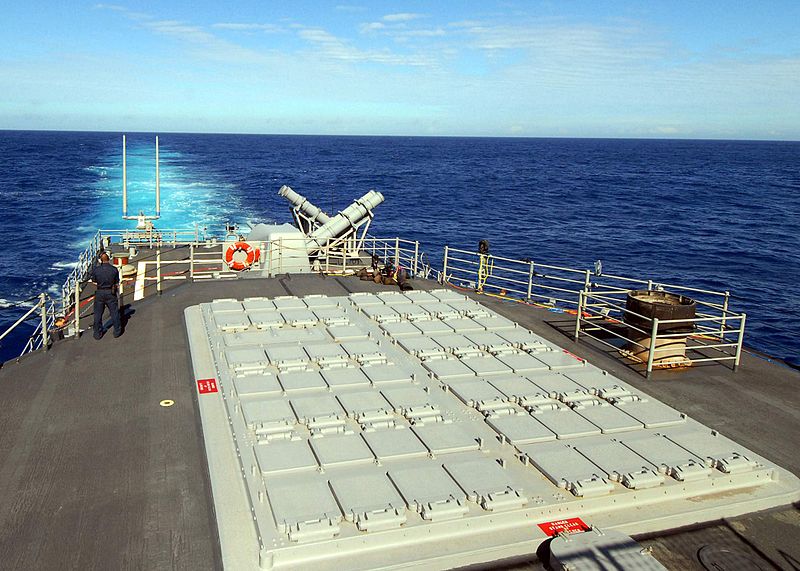
The Navy did come close to effectively fielding a long-range anti-ship weapon. However, the Navy never truly integrated it by only procuring a small quantity and eventually taking it out of the inventory entirely.
At first the Tomahawk missile program pursued a weapon with two different capabilities. An anti-ship Tomahawk missile was first tested six months after the land attack version in 1976.7 The anti-ship Tomahawk incorporated the same active radar seeker and guidance technology from the Harpoon missile, but offered far better range and a larger payload.8 However, by 1995 it appears only about 600 anti-ship Tomahawks were produced, roughly a tenth of the size of the Harpoon inventory.9 The only surface ships that could have carried more than a handful of deck-mounted anti-ship Tomahawks during the Cold War were cruisers that were exclusively focused on protecting capital ships via the defensive anti-air mission. Once the Cold War ended the U.S. Navy got rid of its only long-range anti-surface weapon by remaking the anti-ship Tomahawk missile inventory into the land-attack version.10
Ill-conceived arguments were put forward to justify taking these weapons out, such as how the Navy could not likely target the missile to the maximum extent of its range and the Navy’s current anti-ship missile seekers would be ill-suited to congested waters featuring a mixture of hostiles and non-combatants.11 However far the Navy could target Tomahawk was going to be far better than what it was getting with Harpoon. The Navy certainly accepted a 200-mile anti-ship missile threat from Soviet forces. And if NATO had gone to war against the Soviet Navy it still could have fought in congested waters such as the Mediterranean and Baltic Seas.
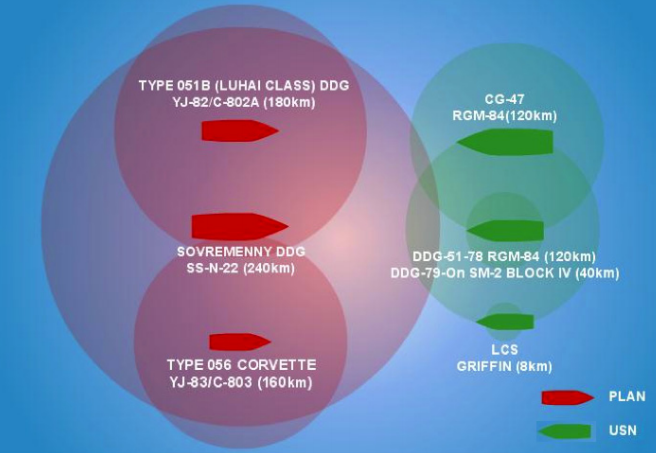
Still, the Tomahawk makes for a relatively poor anti-ship missile. It is subsonic and lacks aerodynamic features that allow for dynamic terminal maneuvering and where both drawbacks will lower its survivability. More missiles would have to be fired per salvo to achieve a similar effect offered by the more modern missiles coming to the fleet like the Long Range Anti-Ship Missile (LRASM) and Standard Missile (SM)-6.
Tomahawk’s best feature is its long range of hundreds of miles which would allow a dispersed force to aggregate their fires into concentrated salvos via networking.12 However, both slow speed and long range increase the dependence of the missile on in-flight retargeting updates and creates a more burdensome kill chain. It is also questionable to use such a large warhead when modern missile seekers using passive sensors can attempt to pinpoint their strikes on ships. If a missile can confidently choose to hit a ship in the magazine or in other spaces that guarantee a mission kill then missile design can more readily trade warhead size for extra range and speed.
The Navy is once again pursuing this capability. An anti-ship Tomahawk missile will be coming back to the fleet in 2022, 40 years after a Tomahawk first sunk a ship in testing.13
Defensive Firepower
“Anything can be saturated. Aegis can be saturated.”–Rear Admiral Wayne E. Meyer (ret.)
One of the most fundamental trends of military capability is that of reinforcing the kill chain, or the process by which targets are found by sensors and then fired upon with weapons. This process requires certain levels of information from simple detection to targeting-quality data. A key challenge is in keeping the kill chain resilient and freshly updated once the weapon is fired and travels a distance to its target. In response to being detected or coming under fire a target can change its behavior and launch decoys which can require new targeting inputs. Arguably one of the most information intensive fights among the warfare areas is the anti-air mission where sustained radar energy must steadily illuminate speedy aerial targets over great distances in order to guide a missile toward a hit.
The difficulty of steadily illuminating a dynamic aerial target can be somewhat mitigated by putting a radar seeker into the missile itself, a capability known as active radar seeking. This adds resilience to the kill chain and gives the missile some degree of independence from external illumination sources such as the radar of a ship or aircraft. Usually active radar seeking is engaged in the terminal phase of the engagement given the relatively small size of the onboard seeker.
Missiles that are totally dependent on outside sources for illumination operate under semi-active homing. The Navy realized the potential of combining both semi-active and active radar homing when it fielded the Phoenix missile through the F-14 Tomcat that was the mainstay of the fleet’s air-to-air capability during its service life. The Phoenix missile could travel 100 miles and engage active radar seeking in the final moments to see the engagement through. The fundamental principle of building resilience into the kill chain by adding an active seeker into the payload itself is also reflected in the many torpedoes that have an active homing capability and in the Aster anti-air missile that is widely used by European navies today.
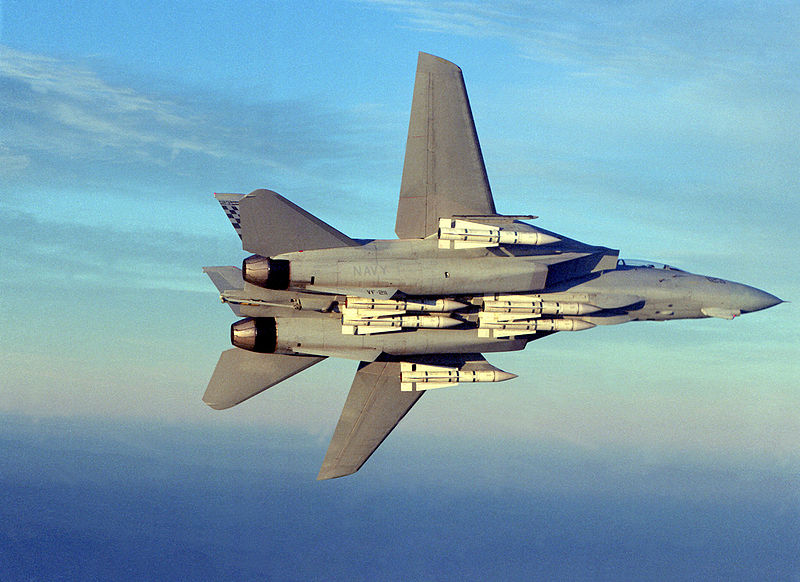
Aircraft, through adjusting altitude and maneuver, are clearly not as inhibited as warships in illuminating their targets for anti-air engagements. If it made sense to put active radar seekers in anti-air missiles used by aircraft then it should make even more sense for a ship which must contend with the horizon and cannot maneuver in three dimensions like aviation. If an aerial target dives in reaction to being sensed and engaged then an attacking missile could use its active radar seeker to chase the target below the horizon limitation of its illuminating ship in a bid to independently finish the engagement. Such a capability adds extra depth to a ship’s ability to defend itself below the radar horizon and at altitude.
The Navy fielded active radar seekers over 40 years ago in the Phoenix air-to-air missile it procured by the thousands.14 The story is different for the surface fleet. In spite of this simple but important enhancement almost all of the Navy’s surface-to-air missiles do not have active radar seeking technology.
The missiles that are the mainstay of the fleet’s defensive arsenal such as Standard Missile (SM) and the Evolved SeaSparrow Missile (ESSM) are only equipped with semi-active radar homing, and where this form of homing has tactical handicaps. Semi-active homing works by having an external source illuminate a target with its radar. The radar reflections are picked up by the missile, which then finds its way to the target with the assistance of mid-course guidance from the external radar. Because a ship is limited by the horizon, if a target dives deep enough, the ship will no longer be able to illuminate it with its radar to see the engagement through.

Land-based surface-to-air missiles are not as inhibited by semi-active homing in spite of the same horizon limitation because they work in tandem with other anti-air systems. An aircraft diving low to avoid illumination over land places itself at risk of being engaged by shorter range anti-air weapons that do not reveal themselves through radar emissions. This tactic worked to great effect over Vietnam as radar-guided surface-to-air missile batteries forced American warplanes to drop altitude and fly within range of gun-based anti-air systems which ended up shooting down more aircraft than missiles.15 There is no similar effect at sea because capability is concentrated on warships.
To an extent Sailors already know the Standard Missile is handicapped by its guidance capability. The Standard Missile has an anti-surface mode, but of dubious effectiveness. Its range is less than 20 miles in this mode because that is only as far as the ship’s radar can target it close to the surface and to the limit of the horizon.16
An annual Defense Department report from 1975 highlighted this issue when it sought to develop an anti-ship version of the Standard Missile:
“The STANDARD SSM program was initiated in 1971 to provide an interim anti-ship missile capability until the HARPOON could be developed and deployed. The STANDARD SSM is operational in two versions, with a third now in development…The third version, Active STANDARD with a radar seeker…will have a range capability beyond the ship radar horizon. The range of the STANDARD semi-active missile is limited to the range of the ship’s radar, since the missile’s target must be illuminated by a ship radar. The STANDARD ARM and Active STANDARD, equipped with an anti-radiation homing capability and an active terminal seeker, respectively, eliminate the need for illumination of the target by a ship radar and thus permit engagement of targets beyond the ship radar horizon.”17
In the end the original Active Standard SSM never made it into the fleet though the same basic idea and capability would be replicated decades later. Despite many variants produced across nearly 50 years of service active radar seeking did not come to the Standard Missile family of weapons until SM-6 arrived in 2013. Even so, SM-6 does not have a unique seeker but takes its active radar seeker from the widely equipped AMRAAM air-to-air missile that entered service in 1991.18 SM-6 introduced an anti-ship capability in 2016, similar in concept to what was already deemed desirable many years ago in the form of the Active Standard SSM.19 SM-6 now bears the odd distinction of being both the Navy’s first long-range active radar seeking surface-to-air missile, and its first supersonic anti-ship missile.
In explaining the benefit of SM-6 the Navy once again described the value of similar technology 40 years later:
“The introduction (emphasis added) of active-seeker technology to air defense in the Surface Force reduces the Aegis Weapon System’s reliance on illuminators. It also provides improved performance against stream raids and targets employing advanced characteristics such as enhanced maneuverability, low-radar cross-section, improved kinematics, and advanced electronic countermeasures.”20
However, SM-6 will be fielded in relatively small numbers because it is extremely expensive and is not meant to replace the more widely equipped SM-2.21 Active radar homing will also not come to the Evolved SeaSparrow Missile, the Navy’s main short-ranged defensive anti-air missile, until the Block 2 upgrade hits the fleet in 2020.22 The Navy is already pursuing a more common Standard Missile variant equipped with an active radar seeker, the SM-2 Block IIIC.23 The missile is being pushed through the Navy’s Maritime Accelerated Capability Office in a bid to shorten the acquisition timeline and hopefully get it into the fleet within three years.24
However, according to the Navy’s 2017 program guide the Standard Missile variants that do not have active radar seekers “will be the heart of the SM-2 inventory for the next 20 years.”25
The Heavy Bomber
“We think we can destroy it; it is our business to attack it, and it is up to you to judge whether we can do it or not. Give the air a chance to develop and demonstrate what it can do!”–Billy Mitchell in 1921 urging Congress to support bombing warships with planes in testing.
When combat is joined between missile-armed fleets the maneuver of individual warships will matter little in the near term because of the large disparity between ship speed and missile speed. Upon engaging in fleet combat a commander’s most flexible means to respond to risk and opportunity in timely fashion will be through speedy aviation. Despite its single-minded focus on using aviation to sink ships at range the Navy never effectively incorporated the use of heavy bombers.
Heavy bombers can feature very long endurance and range, far superior to that of carrier aircraft. Bombers also have large carrying capacity that allows them to mount a level of offensive firepower comparable to that of a warship. Because long-range anti-ship firepower usually outranges anti-air firepower by a steep margin heavy bombers can have a powerful ability to fire effectively first against warships.
Both Russia and China field heavy bombers with long-range anti-ship firepower, and where heavy bombers were at the leading edge of Soviet anti-ship capabilities throughout most of the Cold War. Soviet-era Backfire bombers can travel over 1500 miles, are capable of supersonic speed, and can fire multiple Mach 3 missiles that have hundreds of miles of range. Large Backfire bomber raids have been expected to be a principle tactic for countering American carrier groups far from Russia for decades.26
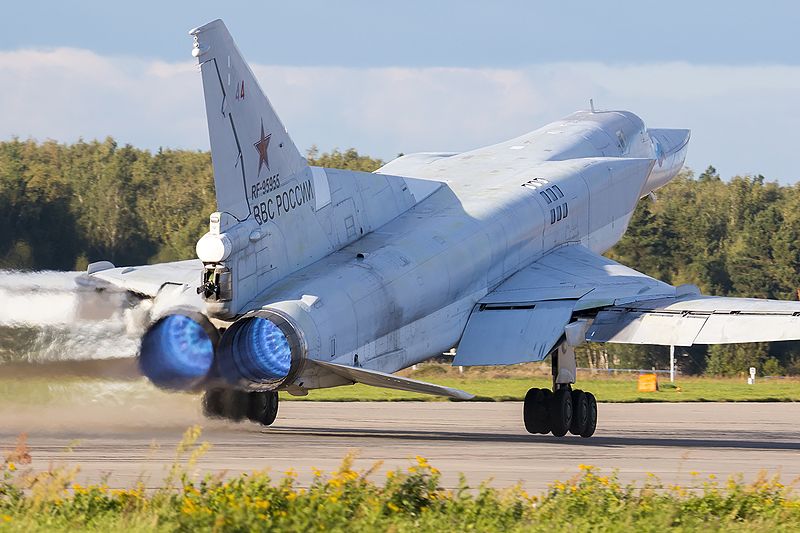
Similar platforms exist within the U.S. military, but heavy bombers belong to the Air Force. It appears the Air Force bought very few Harpoon missiles with less than 100 in its inventory by the mid-90s.27 The full adoption of an anti-ship role for heavy bombers may have also been hindered by a combination of inter-service rivalry between the Navy and the Air Force as well as differing priorities in their contingency planning.
Soon one of the most powerful anti-ship platforms in the American arsenal will not even belong to the U.S. Navy. The platform that will first receive the first truly modern and widespread anti-ship missile of the U.S., LRASM, will not be a Navy asset but the Air Force’s B-1 bomber. These bombers will be able to carry 24 of these powerful weapons, packing over 15 times the anti-ship firepower of a Harpoon-equipped U.S. surface warship.28 These planes will make for an extremely powerful asset when combined with their thousands of miles of range.29 This year the U.S. will finally have a heavy bomber with credible long-range anti-ship firepower, but after the Soviets pioneered the same capability half a century ago.30
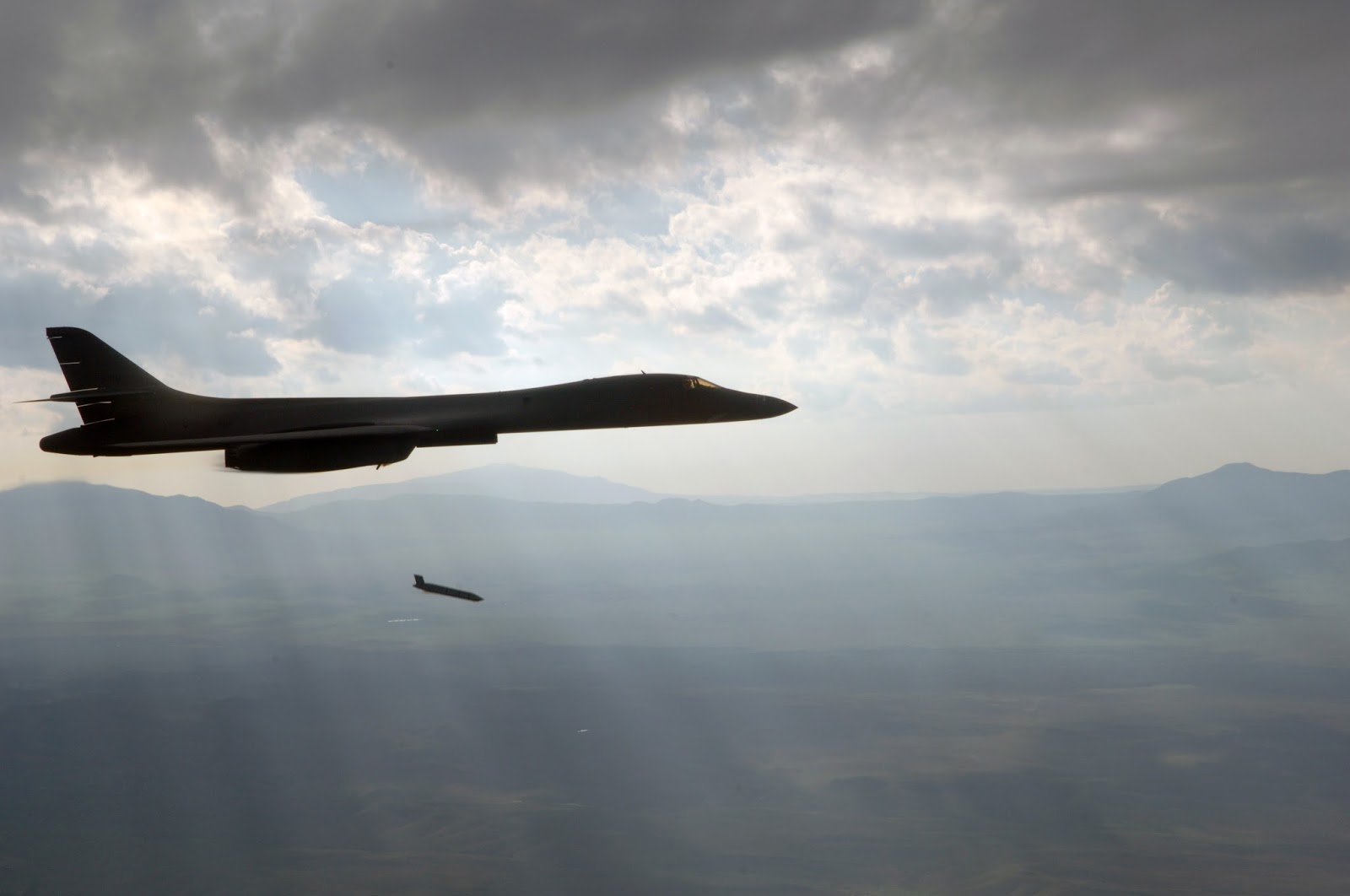
Shortchanged
Of the Navy’s errors in arming the fleet none can compare to failing to effectively bring its offensive firepower into the age of missile warfare. Only now is it on the verge of doing so with launch cell-compatible missiles like LRASM and the Maritime Strike Tomahawk that are just a couple years away from hitting the fleet. Finally the Navy will have widespread anti-ship firepower that can hit at over 100 miles. This wholesome introduction of long-range anti-ship missiles comes over half a century after the Soviets proved it was possible.31
But this recent introduction of long-range anti-ship firepower will not be the Navy’s first attempt. Up until now much of the Navy’s story of fielding anti-ship missiles consists of developing weapons long after they were first possible, then not fielding them in effective numbers, subsequently removing them from the inventory, only to then try and reintroduce them decades later. The Navy lagged long enough to where today there are 400-ton Chinese missile boats that carry more long-range anti-ship firepower than 9,500-ton, billion-dollar American cruisers and destroyers that have around 100 launch cells.32
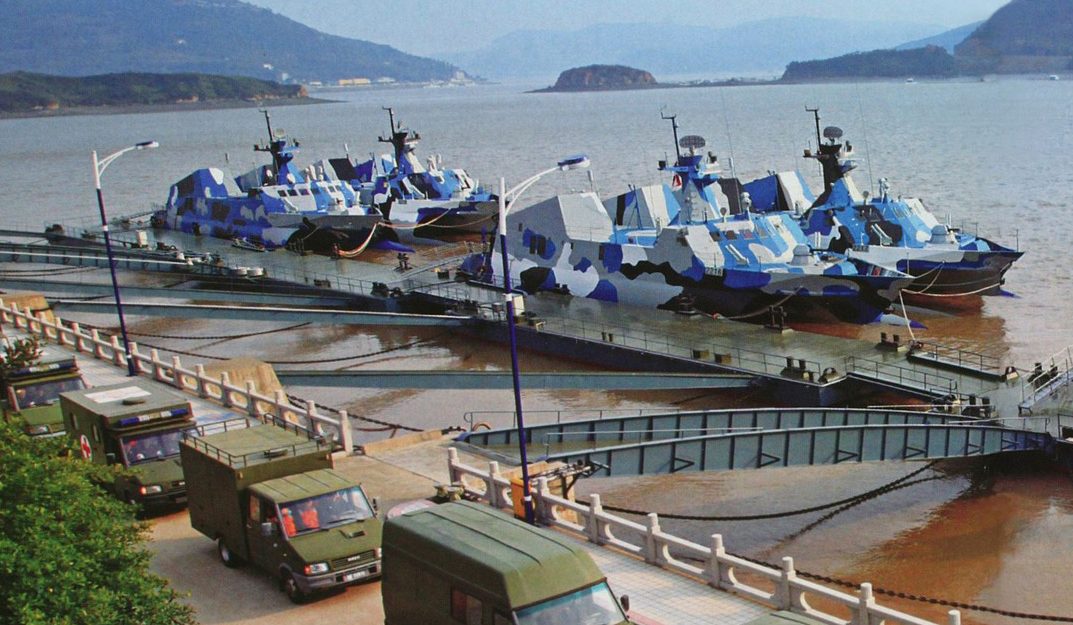
Why was the Navy stuck with only the short-ranged Harpoon for so long, and why were competitors able to design so many more anti-ship missiles with greater lethality in the meantime?
The answer may lie with doctrine. The aircraft carrier has remained the centerpiece of U.S. Navy anti-ship doctrine since WWII. Harpoon probably became the Navy’s first anti-ship missile and remained its primary anti-ship tool for over 40 years because it appears Harpoon was one of the first anti-ship missiles small enough to fit onto multirole aircraft, such as those flown from aircraft carriers.33 By comparison, airborne anti-ship firepower for the Soviets mostly took the form of enormous missiles that could only be carried by large bombers. The very short range of Harpoon was made up for by the long reach of aviation that could travel hundreds of miles and strike targets well before they could get within range to unleash their own anti-ship firepower.
The small size necessary to equip carrier aircraft with Harpoon was a major limiting factor for missile capability with respect to range, speed, and size. Ship-launched missiles can take on far greater proportions such as Tomahawk or the early-Cold War era Talos anti-air missile that weighed over four times as much as Harpoon.34 But by not bothering to effectively field an anti-ship missile that was compatible with the thousands of launch cells across the fleet the Navy was unable to capitalize on core advantages warships bring to the fight – staying power and deep capacity.
It is questionable to subscribe to a doctrine that deprives the surface fleet, the submarine force, and the heavy bomber arm of long-range anti-ship firepower. Russia and China have not made this mistake. With respect to anti-ship firepower in the age of missile warfare not only did the Navy bet the aircraft carrier would reign supreme, but that it could stand alone. While the reach and size of the carrier air wing could compensate for Harpoon’s shortcomings the rest of the fleet was stuck with a small, slow, short-ranged missile kept aboard in very low quantities. The U.S. Navy, so completely blinded by absolute faith in the supremacy of a single platform, failed to effectively field the premier offensive weapon of a new age of warfare.
Part 3 will focus on Tactics and Doctrine.
Dmitry Filipoff is CIMSEC’s Director of Online Content. Contact him at [email protected].
*Correction: Harpoon is equipped by a majority of the U.S. Navy large surface combatants unlike as was originally worded. Harpoon is found on a minority of U.S. Navy destroyers.
References
1. Soviet Naval Cruise Missile Force: Development and Operational Employment, CIA, December 1971 https://www.cia.gov/library/readingroom/docs/DOC_0005512847.pdf
2. Soviet Naval Cruise Missile Force: Development and Operational Employment, CIA, December 1971 https://www.cia.gov/library/readingroom/docs/DOC_0005512847.pdf
3. United States Navy Fact File: Harpoon https://www.navy.mil/navydata/fact_display.asp?cid=2200&tid=200&ct=2
4. Alan Cummings, “A Thousand Splendid Guns: Chinese ASCMs in Competitive Control,” U.S. Naval War College Review, Autumn 2016. https://digital-commons.usnwc.edu/cgi/viewcontent.cgi?referer=https://cimsec.org/?p=37357&preview_id=37357&preview_nonce=33a19394d2&post_format=standard&_thumbnail_id=37675&preview=true&httpsredir=1&article=1143&context=nwc-review
5. Megan Eckstein, “VIDEO: Navy May Bring Back Harpoon Missiles on Attack Subs After Successful SINKEX; RIMPAC Also Highlights Ground-to-Ship Strike Capability,” U.S. Naval Institute News, July 30, 2018. https://news.usni.org/2018/07/30/navy-may-bring-back-harpoon-missiles-on-attack-subs-after-successful-sinkex-rimpac-also-highlights-ground-to-ship-strike-capability
Excerpt: “That shot marked the first time a Harpoon had been fired from a U.S. submarine in more than 20 years, and Commander of U.S. Pacific Fleet’s Submarine Force Rear Adm. Daryl Caudle said he expects that the cruise missile will be added back into the SSN’s regular armament.”
6. Sam LaGrone, “U.S. Navy Considering Adding Anti-Ship Missiles Back to Submarine Force,” U.S. Naval Institute News, October 21, 2015. https://news.usni.org/2015/10/21/u-s-navy-considering-adding-anti-ship-missiles-back-to-submarine-force
Excerpt: “The U.S. submarine fleet did use the UGM-84A Harpoon anti-ship missile but that Harpoon variant was retired in 1997.”
Los Angeles-class and Virginia-class submarines have four torpedo tubes, Seawolf-class (only three boats in class) have eight torpedo subes. See: United States Navy Fact File: Attack Submarines – SSN https://www.navy.mil/navydata/fact_display.asp?cid=4100&ct=4&tid=100
7. Captain Philip Signor, USNR, “Cruise Missiles for the U.S. Navy: An Exemplar of Innovation in a Military Organization,” Naval War College, June 1994. http://www.dtic.mil/dtic/tr/fulltext/u2/a283784.pdf
8. Joseph C. Schissler and John P. Gibson, “The Origin and History of the Global Engagement Department,” Johns Hopkins APL Technical Digest, Volume 29, Number 2 (2010) http://www.jhuapl.edu/techdigest/TD/td2902/Schissler.pdf
9. General Accounting Office, “Precision Guided Munitions in Inventory, Production, and Development,” June 1995. https://www.gpo.gov/fdsys/pkg/GAOREPORTS-NSIAD-95-95/pdf/GAOREPORTS-NSIAD-95-95.pdf
10. For anti-ship Tomahawk remove of service: Joseph C. Schissler and John P. Gibson, “The Origin and History of the Global Engagement Department,” Johns Hopkins APL Technical Digest, Volume 29, Number 2 (2010) http://www.jhuapl.edu/techdigest/TD/td2902/Schissler.pdf
For remanufacture plans: Department of the Navy FY 2005 Budget Estimates https://www.globalsecurity.org/military/library/budget/fy2005/navy/WPN_FY05PB.pdf
Note: Vertical launch cells that could fire Tomahawk missiles were fairly rare in the U.S. Navy until only after the Cold War, and where Tomahawk was also kept in deck-mounted launchers for many ships. Vertical launch cells became more common when Spruance-class destroyers were modified to accomodate launch cells in the 90s, and the concurrent introduction of the Arleigh Burke-class destroyers.
11. Argument on beyond ability to target Tomahawk: Norman Polmar and Thomas Allen, “Naval Weapon of Choice, U.S. Naval Institute Proceedings, February 2016. https://www.usni.org/magazines/navalhistory/2016-02/naval-weapon-choice
Argument on congested waters: General Accounting Office, “Cruise Missiles: Proven Capability Should Affect Aircraft and Force Structure Requirements,” April 1995. https://www.gpo.gov/fdsys/pkg/GAOREPORTS-NSIAD-95-116/pdf/GAOREPORTS-NSIAD-95-116.pdf
12. Rear Admiral Walter M. Locke, USN (ret.),“Tomahawk Tactics, The Midway Connection,” U.S. Naval Institute Proceedings, June 1992. https://www.usni.org/magazines/proceedings/1992-06/tomahawk-tactics%E2%80%94-midway-connection
13. For 1982 test date: E. H. Corirow, G. K. Smith, A. A. Barboux, “The Joint Cruise Missiles Project: An Acquisition History, Appendixes,” RAND, August 1982. http://www.dtic.mil/dtic/tr/fulltext/u2/a141082.pdf
For 2022 Initial Operating Capability: Justin Katz, “DOT&E: Navy lacks anti-ship Tomahawk missile plans beyond IOC,” Inside Defense, February 7, 2018. https://insidedefense.com/daily-news/dote-navy-lacks-anti-ship-tomahawk-missile-plans-beyond-ioc
14. Forecast International, “AIM-54A/C/C+ Phoenix,” https://www.forecastinternational.com/archive/disp_old_pdf.cfm?ARC_ID=1066
15. General William W. Momyer, USAF, Air Power in Three Wars: World War II, Korea, Vietnam, 1978. https://books.google.com/books?id=RfRvCwAAQBAJ&pg=PT128&lpg=PT128&dq=majority+of+aircraft+lost+to+AAA+in+vietnam&source=bl&ots=7prWXMEAm_&sig=SFJddGU-wJ6Sl0PPZ1uHaDw9l70&hl=en&sa=X&ved=0ahUKEwjiv_Pxt6nbAhUPy1kKHYIuAog4ChDoAQg6MAQ#v=onepage&q=majority%20of%20aircraft%20lost%20to%20AAA%20in%20vietnam&f=false
16. Alan Cummings, “A Thousand Splendid Guns: Chinese ASCMs in Competitive Control,” U.S. Naval War College Review, Autumn 2016. https://digital-commons.usnwc.edu/cgi/viewcontent.cgi?referer=https://cimsec.org/?p=37357&preview_id=37357&preview_nonce=33a19394d2&post_format=standard&_thumbnail_id=37675&preview=true&httpsredir=1&article=1143&context=nwc-review
17. Annual Defense Department Report FY 1975. https://history.defense.gov/Portals/70/Documents/annual_reports/1975_DoD_AR.pdf?ver=2014-06-24-150705-323
18. U.S. Navy Program Guide 2017 https://www.navy.mil/strategic/npg17.pdf
19. Remarks by Secretary Carter to Sailors Pierside in Naval Base San Diego, California. February 3, 2016. https://dod.defense.gov/News/Transcripts/Transcript-View/Article/650679/remarks-by-secretary-carter-to-sailors-pierside-in-naval-base-san-diego-califor/
20. U.S. Navy Program Guide 2017 https://www.navy.mil/strategic/npg17.pdf
21. On planned SM-6 inventory: Department of Defense Fiscal Year (FY) 2019 Budget Estimates February 2018, Justification Book Volume 1 of 1 Weapons Procurement, Navy. http://www.secnav.navy.mil/fmc/fmb/Documents/19pres/WPN_Book.pdf#page=53
On Not replacing: Sydney Freedberg, “Non-Standard: Navy SM-6 Kills Cruise Missiles Deep Inland,” Breaking Defense, August 19, 2014. https://breakingdefense.com/2014/08/non-standard-navy-sm-6-kills-cruise-missiles-deep-inland/
22. For seeking capabilities between ESSM blocks: FY17 Navy Programs, Ship Self-Defense for LHA-6. http://www.dote.osd.mil/pub/reports/FY2017/pdf/navy/2017ssdforlha.pdf
First active radar seeker test: PEO IWS Public Affairs, “NATO Seasparrow conducts successful flight test of ESSM Block 2,” July 5, 2018. https://www.navsea.navy.mil/Media/News/Article/1567858/nato-seasparrow-conducts-successful-flight-test-of-essm-block-2/
For 2020 IOC date: Statement Before the Subcommittee on Seapower and Projection Forces of the House Armed Services Committee, May 24, 2017. https://docs.house.gov/meetings/AS/AS28/20170524/105982/HHRG-115-AS28-Wstate-StillerA-20170524.pdf
23. Richard Scott, “NAVSEA advances SM-2 Block IIIC active upgrade plan,” IHS Janes, December 8, 2017. https://www.janes.com/article/76274/navsea-advances-sm-2-block-iiic-active-upgrade-plan
24. Justin Katz, “Raytheon developing upgraded SM-2 exclusively for United States,” Inside Defense, January 12, 2018. https://insidedefense.com/insider/raytheon-developing-upgraded-sm-2-exclusively-united-states
Statement Of The Honorable James F. Geurts Assistant Secretary Of The Navy Research, Development And Acquisition Before The T Senate Armed Services Committee On Department Of Defense Acquisition Enterprise And Associated Reforms, December 7, 2017. https://www.armed-services.senate.gov/imo/media/doc/Geurts_12-07-17.pdf
25. U.S. Navy Program Guide 2017 https://www.navy.mil/strategic/npg17.pdf
26. For Backfire bomber performance characteristics:
Federation of American Scientists, “Tu-22M BACKFIRE (TUPOLEV),” https://fas.org/nuke/guide/russia/bomber/tu-22m.htm
Dr. Carlo Kopp, “Tupolev Tu-22M3 Backfire C Bomber – Missile Carrier,” Air Power Australia, July 2007. http://www.ausairpower.net/APA-Backfire.html
For expected wartime use of Backfire bomber see: National Intelligence Estimate, WARSAW PACT Forces Opposite NATO, January 1979. https://www.cia.gov/library/readingroom/docs/1979-01-31b.pdf#page=79
27. General Accounting Office, “Precision Guided Munitions in Inventory, Production, and Development,” June 1995. https://www.gpo.gov/fdsys/pkg/GAOREPORTS-NSIAD-95-95/pdf/GAOREPORTS-NSIAD-95-95.pdf
28. The figure of 15 times greater is derived using strike-mile metric, see: Alan Cummings, “A Thousand Splendid Guns: Chinese ASCMs in Competitive Control,” U.S. Naval War College Review, Autumn 2016. https://digital-commons.usnwc.edu/cgi/viewcontent.cgi?referer=https://cimsec.org/?p=37357&preview_id=37357&preview_nonce=33a19394d2&post_format=standard&_thumbnail_id=37675&preview=true&httpsredir=1&article=1143&context=nwc-review
29. Oriana Pawlyk, “B-1 Crews Prep for Anti-Surface Warfare in Latest LRASM Tests,” Military.com, January 3, 2018. https://www.military.com/dodbuzz/2018/01/03/b-1-crews-prep-anti-surface-warfare-latest-lrasm-tests.html
U.S. Air Force B1 Fact Sheet, https://www.af.mil/About-Us/Fact-Sheets/Display/Article/104500/b-1b-lancer/
30. National Intelligence Estimate, WARSAW PACT Forces Opposite NATO, January 1979. https://www.cia.gov/library/readingroom/docs/1979-01-31b.pdf#page=79
31. For Maritime Strike Tomahawk: Sam LaGrone, “Navy, Raytheon Close to Finalizing Maritime Strike Tomahawk Missile Deal,” U.S. Naval Institute News, August 16, 2017. https://news.usni.org/2017/08/16/navy-raytheon-close-finalizing-maritime-strike-tomahawk-missile-deal
For LRASM: Sydney Freedberg, “Navy Warships Get New Heavy Missile: 2,500-Lb LRASM,” Breaking Defense, July 26, 2017. https://breakingdefense.com/2017/07/navy-warships-get-new-heavy-missile-2500-lb-lrasm/
For early Soviet Anti-ship missile history: Soviet Naval Cruise Missile Force: Development and Operational Employment, CIA, December 1971 https://www.cia.gov/library/readingroom/docs/DOC_0005512847.pdf
32. Firepower comparison using strike-mile metric: Alan Cummings, “A Thousand Splendid Guns: Chinese ASCMs in Competitive Control,” U.S. Naval War College Review, Autumn 2016. https://digital-commons.usnwc.edu/cgi/viewcontent.cgi?referer=https://cimsec.org/?p=37357&preview_id=37357&preview_nonce=33a19394d2&post_format=standard&_thumbnail_id=37675&preview=true&httpsredir=1&article=1143&context=nwc-review
33. Navy has an multi-role fighter-mounted weapon known as SLAM-ER that has superior range to Harpoon and is capable of engaging ships. However, it is much more rare than Harpoon. See inventory: Forecast International, AGM-84E SLAM, March 2011. https://www.forecastinternational.com/archive/disp_pdf.cfm?DACH_RECNO=850
34. For Talos missile dimensions see: Frank A. Dean, “The Unified Talos,” JHU APL Technical Digest Volume 3, Number 2, 1982. http://www.jhuapl.edu/techdigest/views/pdfs/V03_N2_1982/V3_N2_1982_Dean_Talos.pdf
Despite their enormous size the Navy had cruisers that could carry over 100 Talos missiles through highly advanced missile launch systems and magazines. These shields also carried dozens of shorter-ranged anti-air missiles. See: Elmer D. Robinson, “The Talos Ship System,” JHU APL Technical Digest, Volume 3, Number 2, 1982. http://www.jhuapl.edu/techdigest/views/pdfs/V03_N2_1982/V3_N2_1982_Robinson.pdf
Featured Image: The battleship USS IOWA (BB-61) launches a Harpoon anti-ship cruise missile during Fleet Exercise 2-86 (National Archives Catalog)


